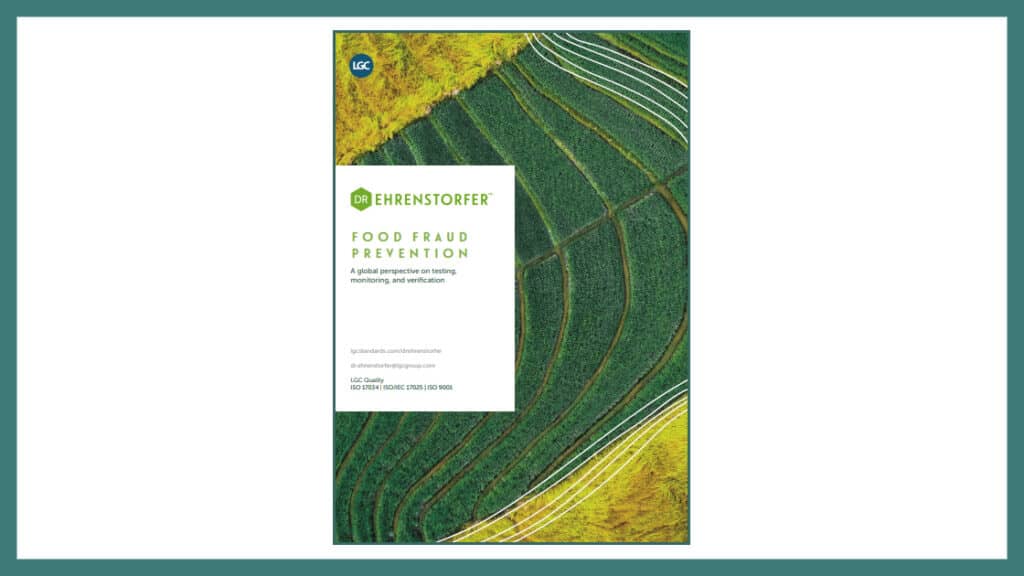This new free report focuses on food technology providers and food manufacturing test development and monitoring. This paper provides insight into how the food authenticity-related concepts of testing, monitoring, and verification can be applied effectively within the overall framework of food fraud prevention.
- Link: Food Fraud Prevention, LGC Dr. Ehrenstorfer White Paper Series, Author: John W Spink, Ph.D., Reviewer: Selvarani Elahi, MBE, https://www.lgcstandards.com/GB/en/Resources/Dr_Ehrenstorfer_white_papers
LGC, and specifically Selvarani Elahi, have been great partners over the years. Our first interaction was during the EU Food Integrity Project (FIP), which helped found the Food Authenticity Network (FAN). I was on the board of advisors of the FIP and now am an active advisory board member of FAN. Along the way, we have worked together on projects for UK DEFRA and others.
Over the years, we saw a need to filter and summarize all the latest thinking and best practices (and confusion) specifically for the science and technology field. Specifically, there was an opportunity to help with resources-allocation in the food technology providers of testing and monitoring. There was also a need to support food manufacturing company test developing and monitoring programs to add a more holistic focus on food fraud prevention (not just detection – though detection is still very important).
From the new food fraud prevention report:
“Food authenticity testing is complex, and there is frequently a need for analytical scientists to provide more than just a ‘Yes/No’ answer for the presence or absence of an analyte. Partnership working between laboratories and [food business owners] will lead to implementing a more robust food authenticity testing regime that is more likely to be valued by all stakeholders.”
We provided straightforward recommendations such as “How Laboratories Partner can support food business owners in food fraud prevention.”
“Laboratories can either adopt a reactionary approach to offering food authenticity testing services i.e., waiting for a request for a specific product or service – a situation that usually occurs following an incident such as the melamine or species swapping examples above. Once the incident passes, the testing is often stopped – since the emergency has passed, and there is a perception that detection tests are no longer needed. Or laboratories can adopt a partnership approach whereby they discuss the requirements of the FBO and offer them a testing programme that identifies and suggests solutions to relevant, specific fraud opportunities identified in their vulnerability assessment. When the food fraud opportunities and their potential impacts are understood by the FBO, delivering a comprehensive food fraud prevention programme can be achieved using a strategic approach.”
Takeaway Points
For food technology providers and food manufacturing test development and monitoring:
- Of course, first focus on the operational activities or services being requested – e.g., testing for the presence of an adulterant-substance.
- Beyond just conducting the tests, provide the added value of insight from related food fraud prevention testing or trends – e.g., you may help with the detection of a novel incident such as melamine in infant formula or horsemeat in beef.
- Finally, for key customers or industries, understand the compliance requirements as well as the emerging food fraud vulnerabilities – you will be able to provide more strategic prevention value.

